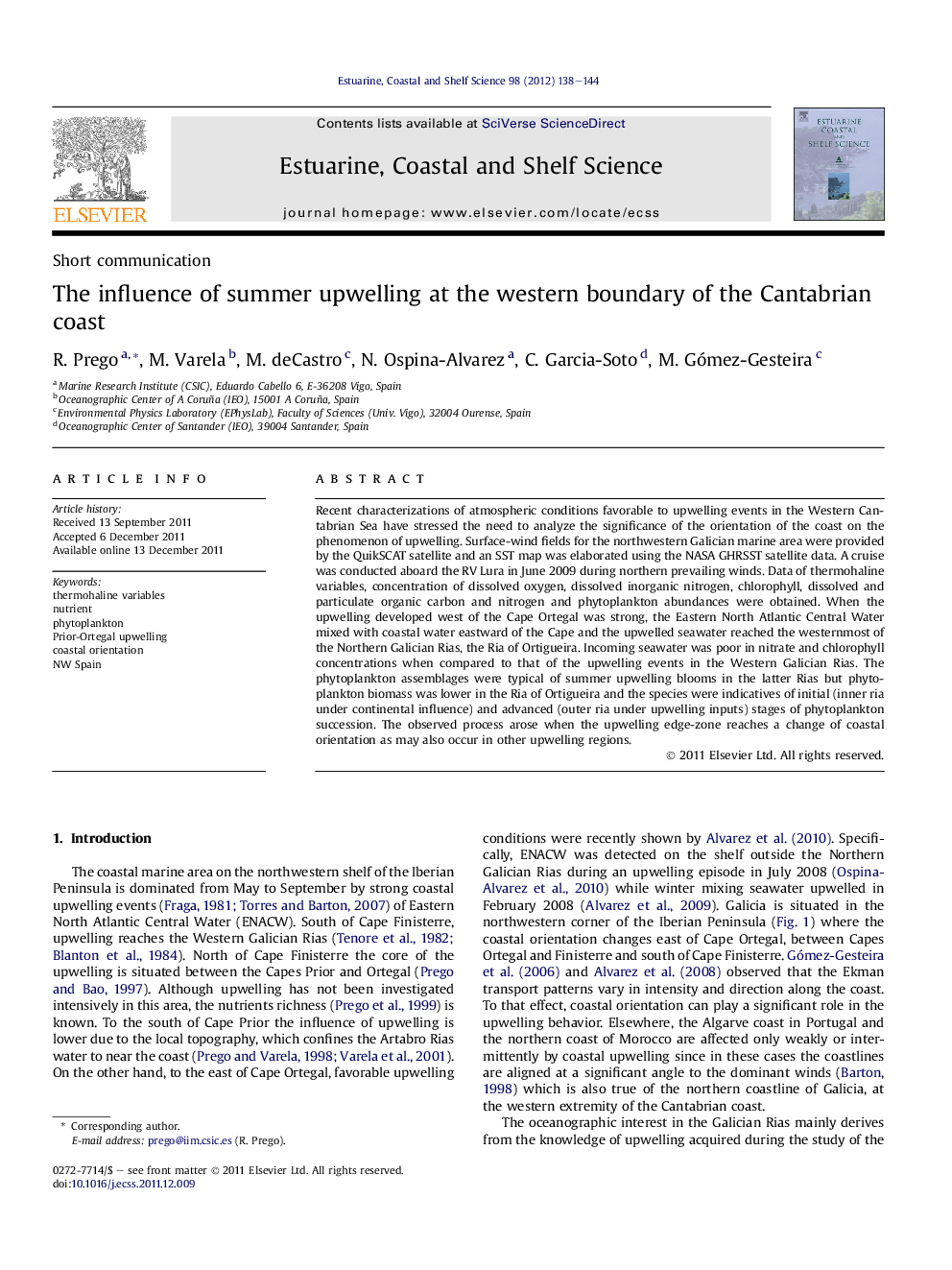| Article ID | Journal | Published Year | Pages | File Type |
|---|---|---|---|---|
| 4540335 | Estuarine, Coastal and Shelf Science | 2012 | 7 Pages |
Recent characterizations of atmospheric conditions favorable to upwelling events in the Western Cantabrian Sea have stressed the need to analyze the significance of the orientation of the coast on the phenomenon of upwelling. Surface-wind fields for the northwestern Galician marine area were provided by the QuikSCAT satellite and an SST map was elaborated using the NASA GHRSST satellite data. A cruise was conducted aboard the RV Lura in June 2009 during northern prevailing winds. Data of thermohaline variables, concentration of dissolved oxygen, dissolved inorganic nitrogen, chlorophyll, dissolved and particulate organic carbon and nitrogen and phytoplankton abundances were obtained. When the upwelling developed west of the Cape Ortegal was strong, the Eastern North Atlantic Central Water mixed with coastal water eastward of the Cape and the upwelled seawater reached the westernmost of the Northern Galician Rias, the Ria of Ortigueira. Incoming seawater was poor in nitrate and chlorophyll concentrations when compared to that of the upwelling events in the Western Galician Rias. The phytoplankton assemblages were typical of summer upwelling blooms in the latter Rias but phytoplankton biomass was lower in the Ria of Ortigueira and the species were indicatives of initial (inner ria under continental influence) and advanced (outer ria under upwelling inputs) stages of phytoplankton succession. The observed process arose when the upwelling edge-zone reaches a change of coastal orientation as may also occur in other upwelling regions.
